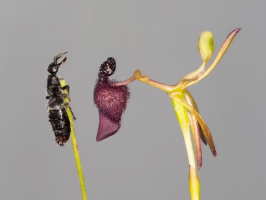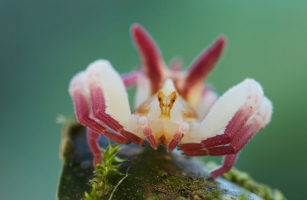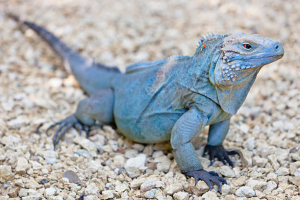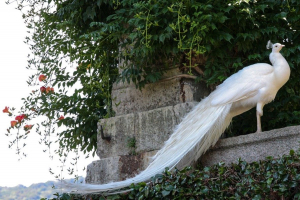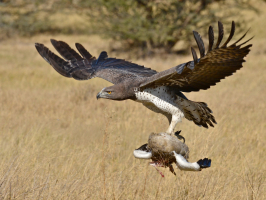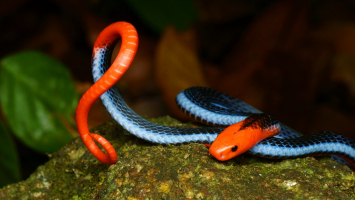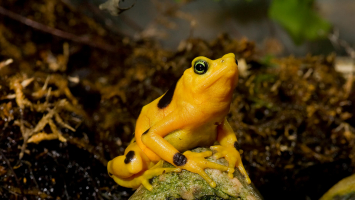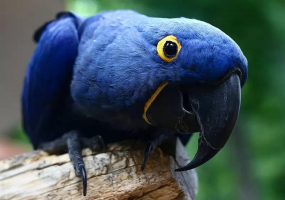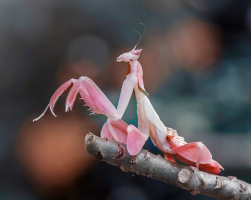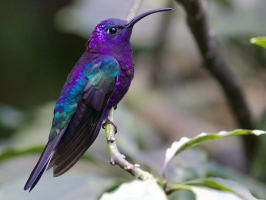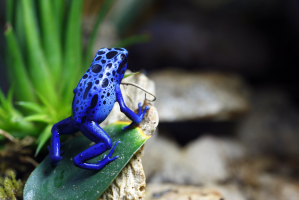Top 10 World's Most Beautiful Moths
Butterflies and Moths both belong to the same insect group called Lepidoptera. However, what’s the difference between a moth and a butterfly? A furry, robust ... read more...body and antennae that are feathery or thready, without knobs at the end are two forms of moth identification. Moths tend to fold their wings over their backs as opposed to resting with them folded upright as butterflies do. Most, but not all, are nocturnal. On the evolutionary scale, moths appeared much earlier than butterflies, and there are a lot more of them. A lot of moths are indeed neutral colored, for that helps camouflage them during the day when they’re at rest, but some are spectacularly colorful. Below is a list of the most beautiful moths in the world, let's find out!
-
Chrysiridia rhipheus, the Madagascan Sunset Moth, is a species of day-flying moth of the family Uraniidae. It is considered one of the most impressive and appealing-looking lepidopterans. At first, the moth was thought to be from China or Bengal but was later found to be endemic to Madagascar. It is found throughout the year in most parts of the island, with peak populations between March and August, and the smallest numbers between October and December.
A wingspan of 7-9 centimeters, and occasionally up to 11 centimeters, is typical for Chrysiridia rhipheus. Moths at higher elevations, between 900 and 1,080 meters, have an average wingspan of 7 cm, while those from lower elevations, at 600 meters (2,000 feet), have an average wingspan of 9 cm. Sunset moths, like many other uraniine moths, have remarkable similarities to swallowtail butterflies, notably in their tails and vibrant wings, and are sometimes mistaken for butterflies. The black, iridescent red, blue, and green markings of the sunset moth are striking. The edges of the wings have a white scale border, which is broader on the hindwings. The six tails of the moth are frequently lost or injured throughout its lifespan. Pattern variations are common, and the moth is often partly asymmetrical, one of the factors causing this is temperature shock during the pupal stage.
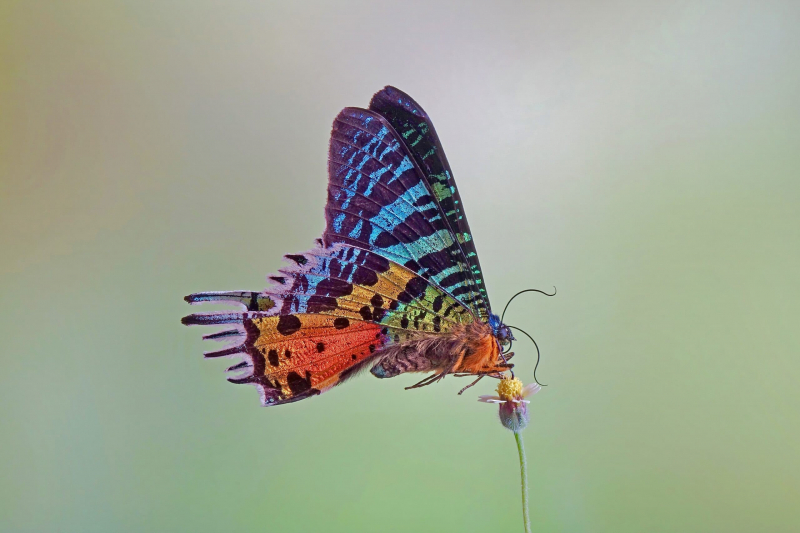
Earth.com 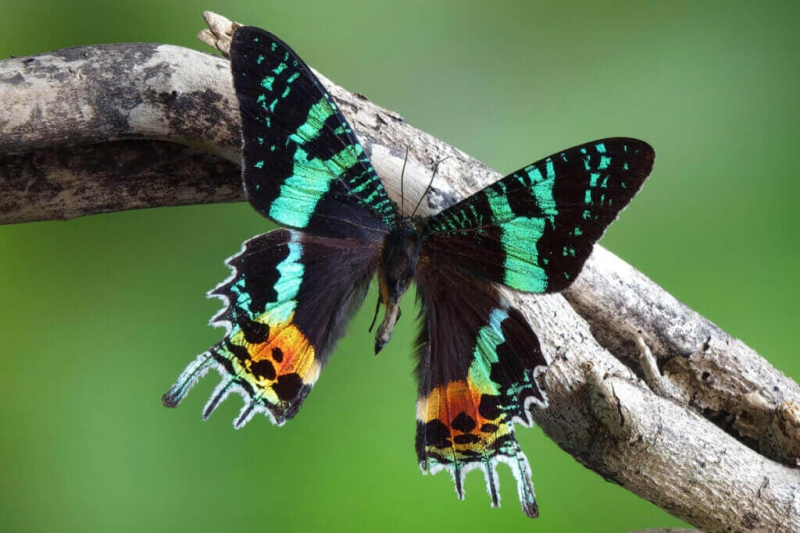
My Animals -
The Elephant Hawk Moth (Deilephila elpenor), also known as the Large Elephant Hawk Moth, belongs to the Sphingidae family of moths. The caterpillar's similarity to an elephant's trunk gave rise to its common name. It is found throughout the Palearctic region, although central Europe is where it is most common. It has also been adopted by the Canadian province of British Columbia. Due to its striking olive and pink color, it is one of the most noticeable moths in its area. However, the closely similar species known as the small elephant hawk moth, which also has distinguishing colors, is frequently confused with the elephant hawk moth.
It is one of the most colorful moths that can mostly see in bronzy green with pink stripes. They can range in various sizes, but their wings span can range between 45mm and 70mm. Due to their nocturnal nature, these moths consume flowers that bloom or produce nectar at night. The elephant hawk moth was one of the first species in which nocturnal color vision in animals was recorded because of its extremely sensitive eyes, which enable it to perceive color even in low light.
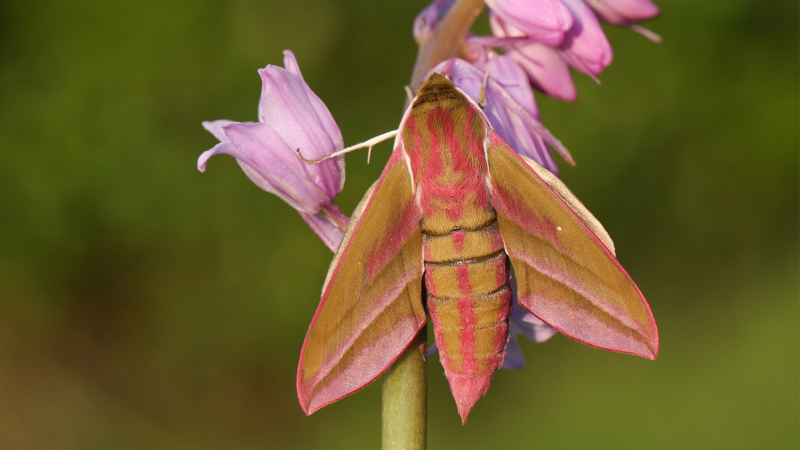
Animals | HowStuffWorks 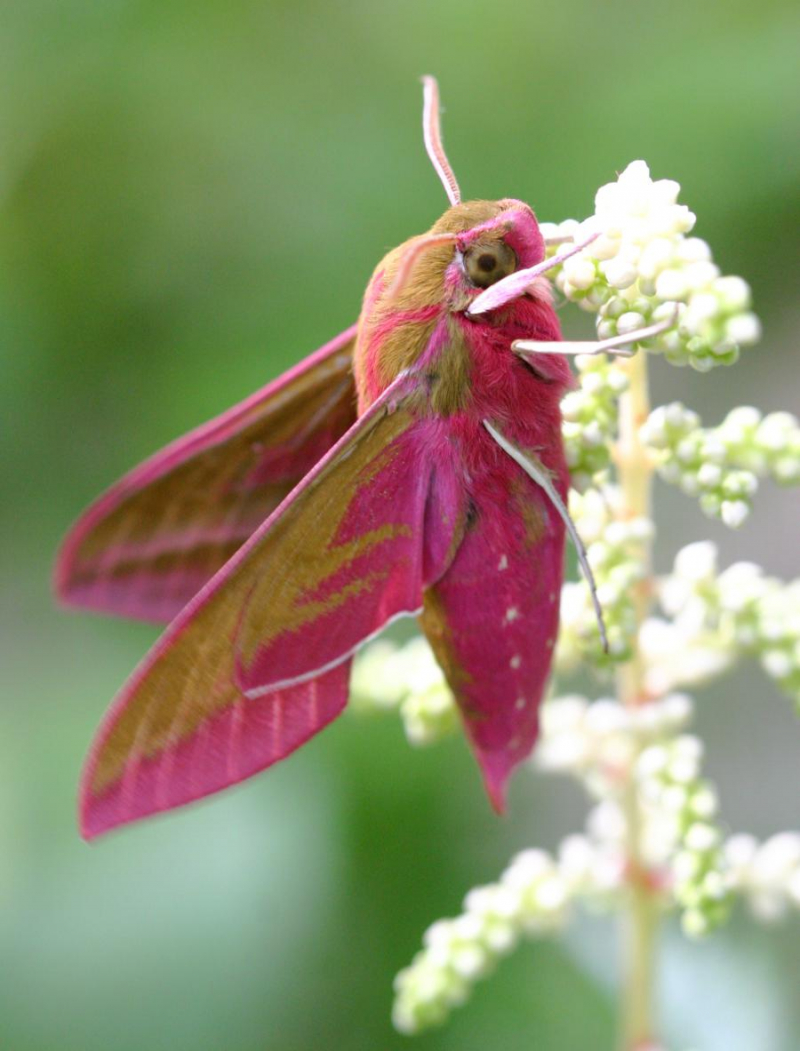
NatureSpot -
Utetheisa pulchella, the crimson-speckled flunkey, crimson-speckled footman, or Crimson-Speckled Moth, is a moth of the family Erebidae. The species was first described by Carl Linnaeus in his 1758 10th edition of Systema Naturae. This common widespread species can be found in most of Europe (as a migrant), in the Afrotropical realm, in North Africa, in the Near East and Central Asia, in the western Indomalayan realm (not known east of Myanmar). In the United Kingdom, it is only a sporadic migrant. These moths inhabit dry open places, meadows, shrublands, grasslands, and parks.
Utetheisa pulchella has a wingspan that ranges from 29 to 42 mm. The front wings have a varied pattern of several little black spots arranged in between bigger, bright red spots. The front wings are slender, white, or cream in color. The red specks can occasionally be combined into transverse bands. The hindwings are broad and white with two black marks in the center of the cell and an erratic black border along the outer edge. The head and thorax have the same pattern as the wings and range in color from cream to buff yellow. The antennae are monofiliform and long. White background and a smooth abdomen are also present.
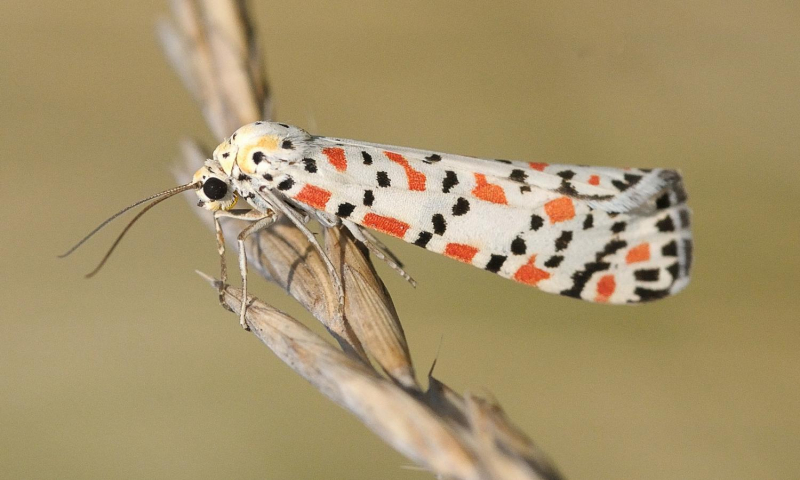
Butterfly Conservation 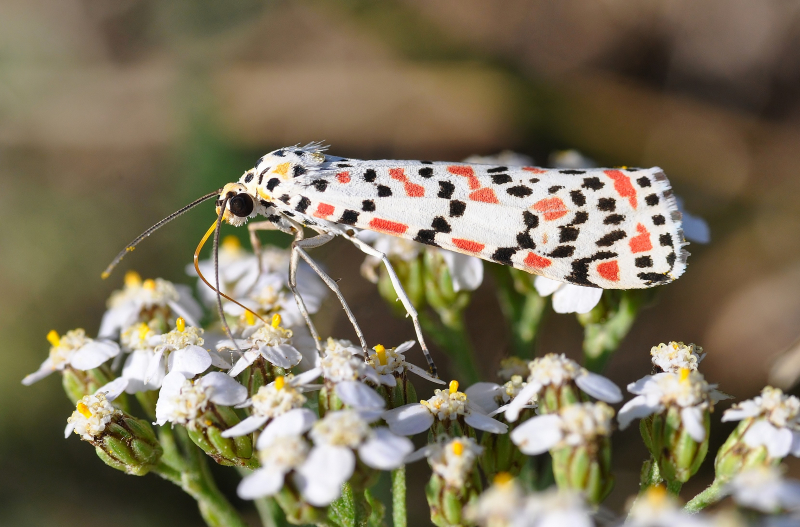
Butterfly Conservation -
Thysania agrippina is a species of moth in the family Erebidae. It was described by Maria Sibylla Merian in her 1705 publication Metamorphosis insectorum Surinamensium, and Pieter Cramer provided the formal description of the species in 1776. The most commonly accepted English name is the White Witch. Other common names include the ghost moth, great grey witch, and great owlet moth.
The biggest wingspan of any moth in the world, and possibly the largest insect in the world, is one of the intriguing facts about this moth. This lepidopteran has a wing span of nine to twelve inches. Apart from that, it is one of the most attractive moths. Although it lacks color, the pale wings of this butterfly are covered in detailed dark and blackish brown squiggles, scribbles, and scalloped lines. Contrary to the moth, which has been well-known for almost 300 years, the white witch caterpillar is unknown. It is thought by biologists to eat legumes.
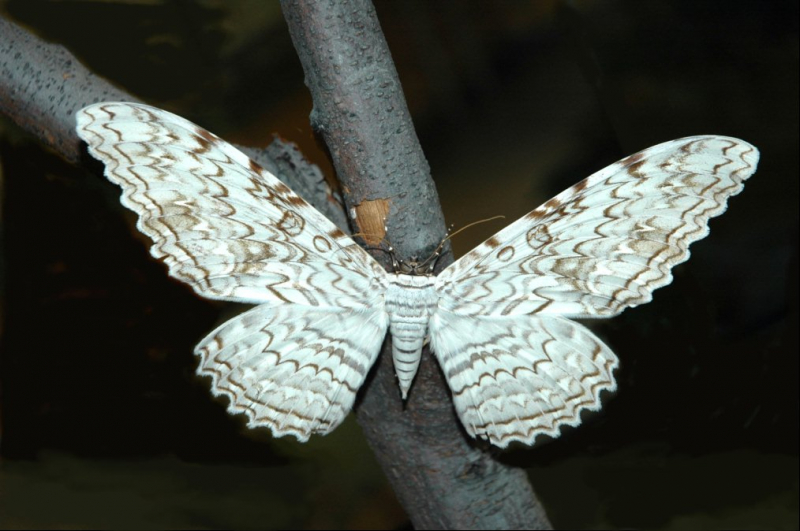
Wikipedia 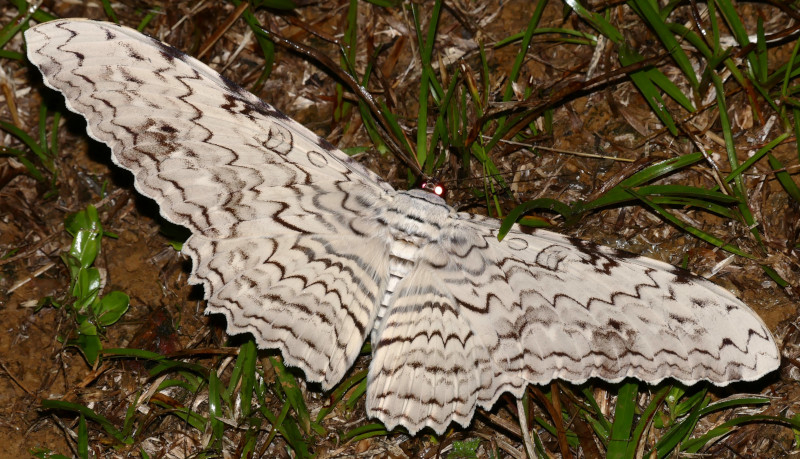
Our Breathing Planet -
Graellsia isabellae, the Spanish Moon Moth, is in the silkmoth family Saturniidae. It is the only species in the monotypic genus Graellsia. The species was first described by Mariano de la Paz Graells y de la Agüera in 1849 and the genus was erected by Augustus Radcliffe Grote in 1896.
It is famous for the way the veins in its wings are highlighted with dark brown on the outside and filled in with reddish-brown on the inside. It is found in the woodlands of Spain and the Pyrenees Mountains. This gives the pale wings the appearance of broken stained glass. Additionally, each wing has an eyespot. The eyespot has two halves, a yellow and a purple one, with white centers. Males have longer tails on their hind wings and more angular, butterfly-like forewings than females, which are larger overall. Also more feathery are his antennae. The hindwings of the female have lobes. The moth's wingspan ranges from 2.5 to 4 inches. The caterpillar eats pine needles, but only pine needles from its native habitat.
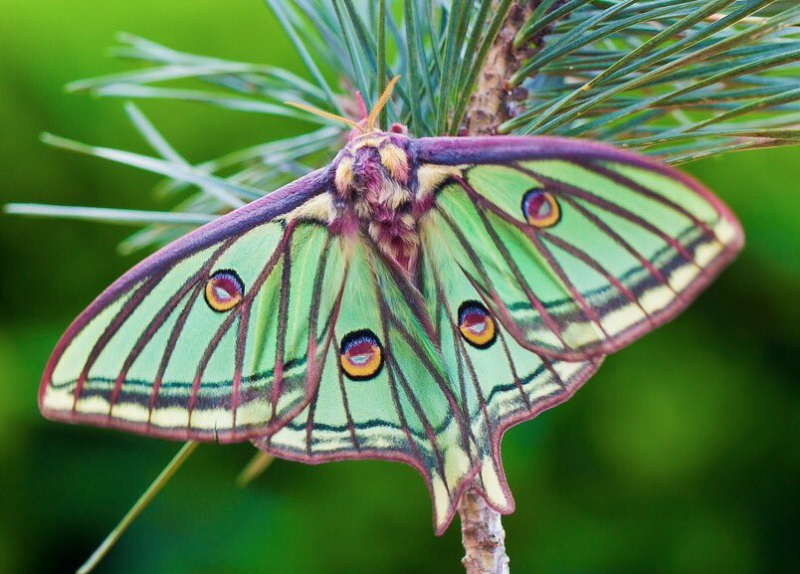
Moth Identification 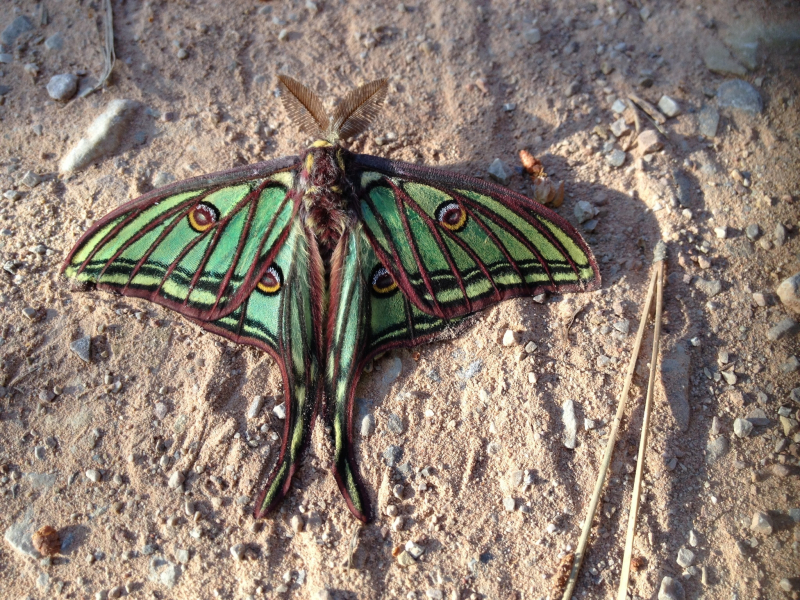
Encyclopedia of Life -
The Cinnabar Moth (Tyria jacobaeae) is a brightly colored arctiid moth found as a native species in Europe and western and central Asia then east across the Palearctic to Siberia to China. Like several other Arctiinae larvae, cinnabar caterpillars can turn cannibalistic. This is mainly due to a lack of food, but they can eat other cinnabar larvae.
The moth is named after the red mineral cinnabar because of the red patches on its predominantly black wings. In his 10th edition of Systema Naturae from 1758, Carl Linnaeus provided the species' first description. The wing span of a cinnabar moth is between 32 and 42 mm. With characteristic pinkish-red and black wings, cinnabar moths are daytime fliers. There isn't much diversity in the patterning, although on rare occasions, the red markings could be replaced with yellow, the forewing could be wholly red with a black border, or the wings could be entirely black.
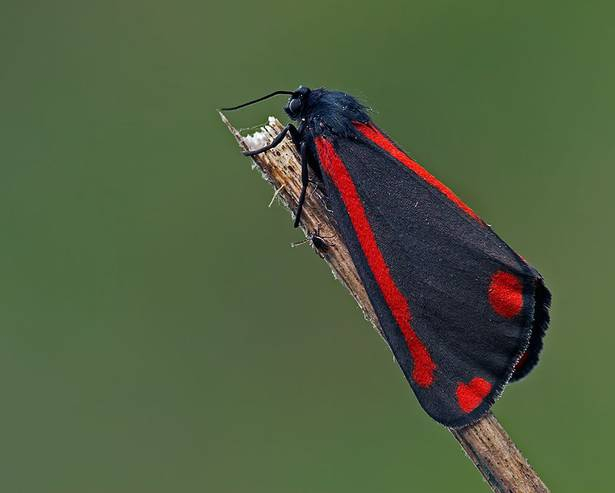
Candide 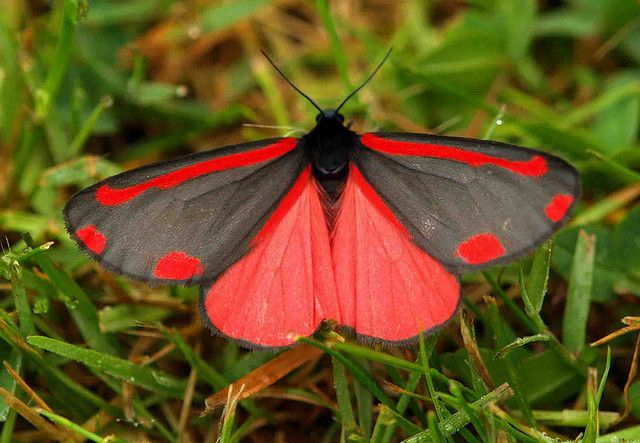
Moth Identification -
The Argent and Sable moth (Rheumaptera hastata) is a day-flying moth of the family Geometridae, with distinctive black and white colors. hey typically inhabit hillsides and wetlands. To create their cocoons, the larvae spin together the leaves of the plants they eat, like birch and bog myrtle. It was christened argent and sable in 1778. Argent and sable refer to the heraldic color names for white and black. Their distribution is Holarctic. The species was first described by Carl Linnaeus in his 1758 10th edition of Systema Naturae.
The wings have a black ground color with variable white pattern elements. A wider inner cross and a narrow basal cross line are typical. White splotches, which may be continuous, run through the black midfield. A broad white band is created by the outer cross line and typically contains a row of black dots. In the black area of the margin is a wavy line broken into white stains, which forms an arrow- or spearhead-shaped element (R. hastata is Latin for spear-shaped). The fringes are stitched in black and white. The hindwing's design resembles that of the forewing. On a few black stains in some shapes, the black tone is diminished.
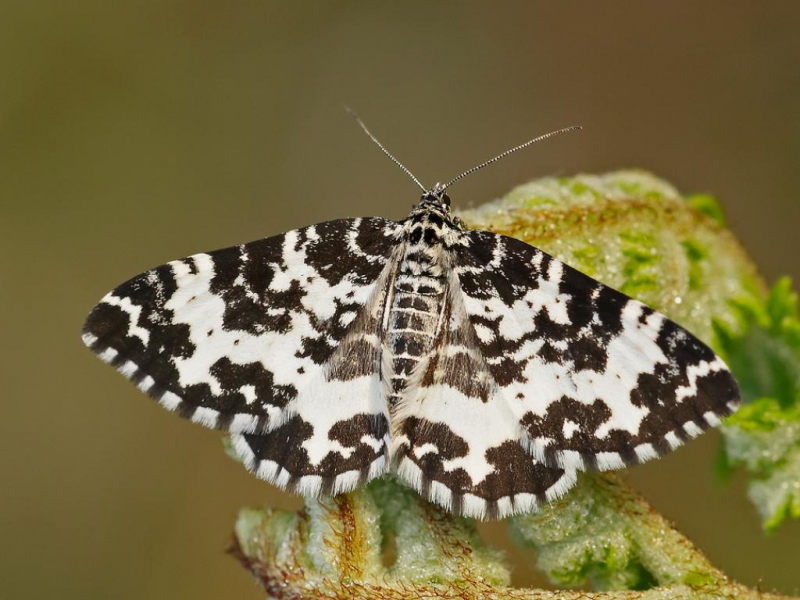
Butterfly Conservation 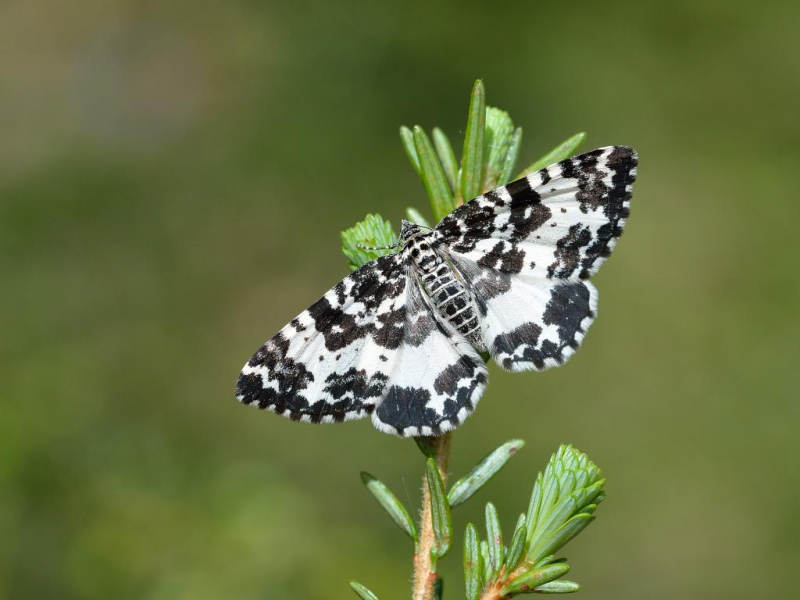
Butterfly Conservation -
The Luna Moth (Actias luna) also known as the American moon moth is a Nearctic moth in the family Saturniidae, subfamily Saturniinae, a group commonly known as giant silk moths. It has a white body and wings that are lime green in color. Additionally green are the caterpillars' larvae. One of the bigger moths in North America, it typically has a wingspan of about 114 mm, but it can reach 178 mm. In Canada, there is only one generation annually, with the winged adults first showing in late May or early June. In the southern United States, however, there are two or possibly three generations annually, with the first appearance occurring as early as March.
As defense mechanisms, larvae emit clicks as a warning and can also regurgitate intestinal contents, confirmed as having a deterrent effect on a variety of predators. It is believed that the extended tails of the hindwings mislead predatory bats' echolocation detection. Luna moths and other native moths appear to have been negatively impacted by a parasite fly that was purposefully brought to North America to function as a biological control for the invasive spongy moth.
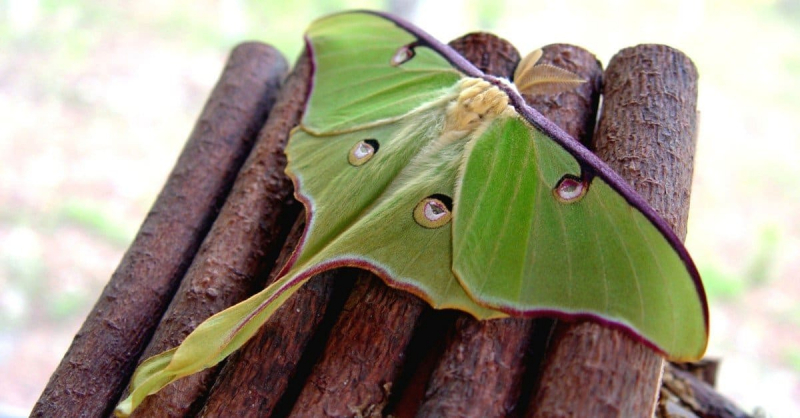
David Hampton/Shutterstock.com 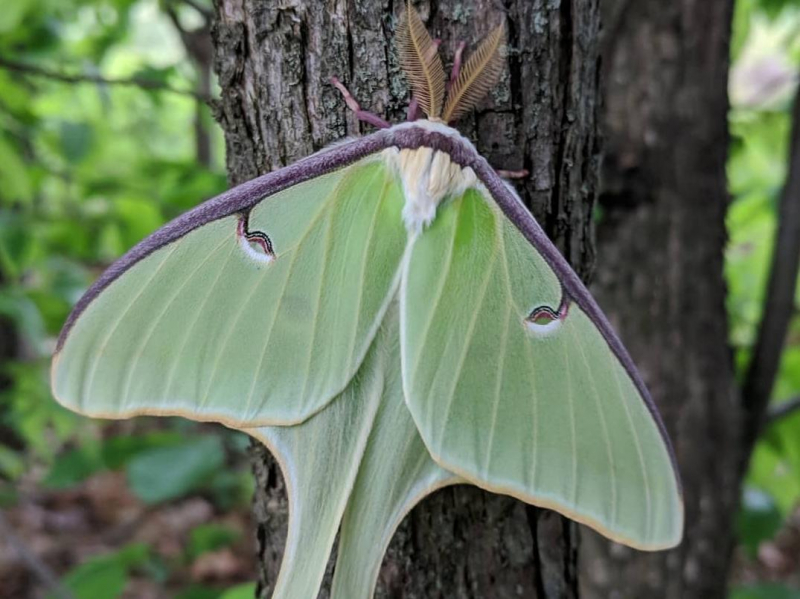
Finger Lakes Land Trust -
A member of the silk moth family, which includes some of the most stunning insects, is the Rosy Maple Moth. The rosy maple moth does not do a lot of damage. In extreme situations, a single host tree may have hundreds of ravenous caterpillars feasting on leaves. The larvae can harm maple trees. The tree is normally not harmed by this, although it could become unsightly because the tree could end up partially or completely barren. If the tree is a sapling or otherwise stressed, this defoliation may be harmful to it.
The vibrant hues of the rosy maple moth serve as a reliable indicator. It comes in a variety of colors, including cream, white, pink, yellow, and purple. However, it appears that the pink and yellow variant is the most popular. The adult moth is thick and fuzzy, and the males have long, comb-like antennae that they use to detect the pheromones, which are chemicals released by females to attract males, in the air. Regardless of gender, the rose maple moth is regarded as the tiniest of silk moths. Males are smaller than females, and adults can measure up to 2 inches across when the wings are spread.
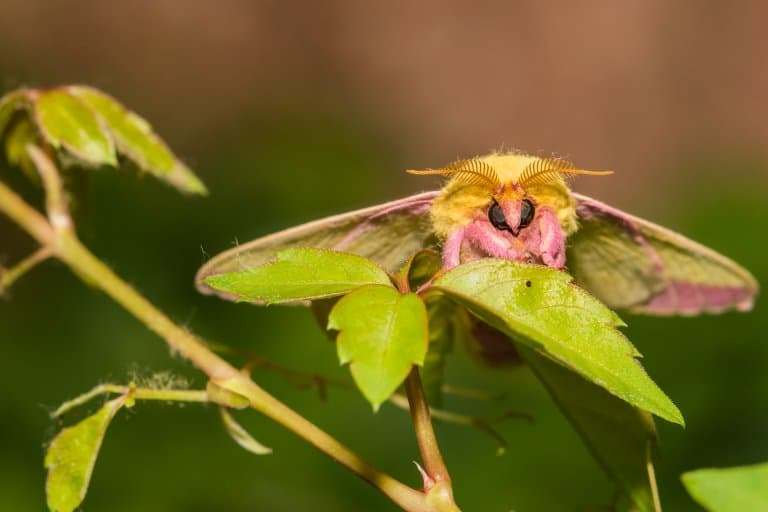
Fact Animal 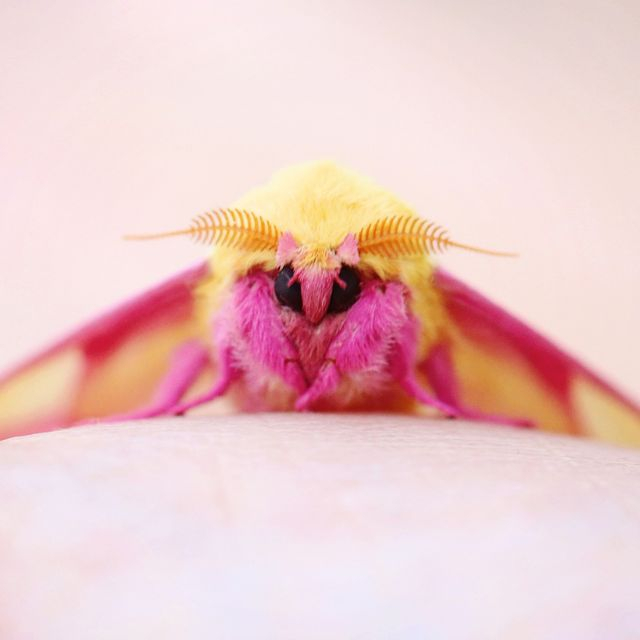
Prevention.com -
The Atlas Moth is the largest species of moth in the world. They are mostly found in tropical and subtropical forests of Southeast Asia. The wingspan of an adult Atlas moth can reach 12 inches, and its surface area is 62 square inches. One of the most exquisite moths in the entire world is this huge one. With purple, red, yellow, and black markings, their fore and hind wings have a particularly appealing rusty-brown color.
Strangely, the Atlas moth's wingtips, which have striking markings and patterns, resemble snakeheads. They employ it to protect against potential predators. Despite being the largest species of moth in the world, after hatching, Atlas moths don't eat since they lack a mouth.
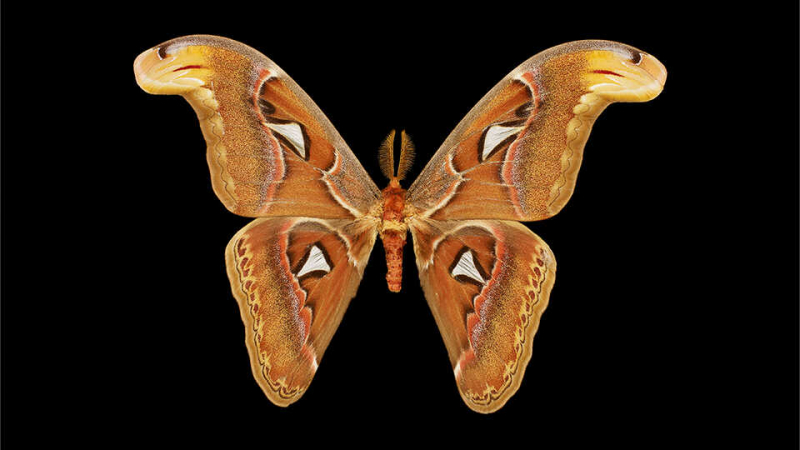
California Academy of Sciences 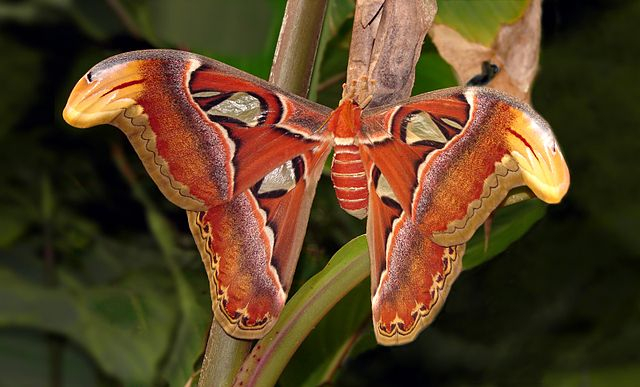
Wikipedia












